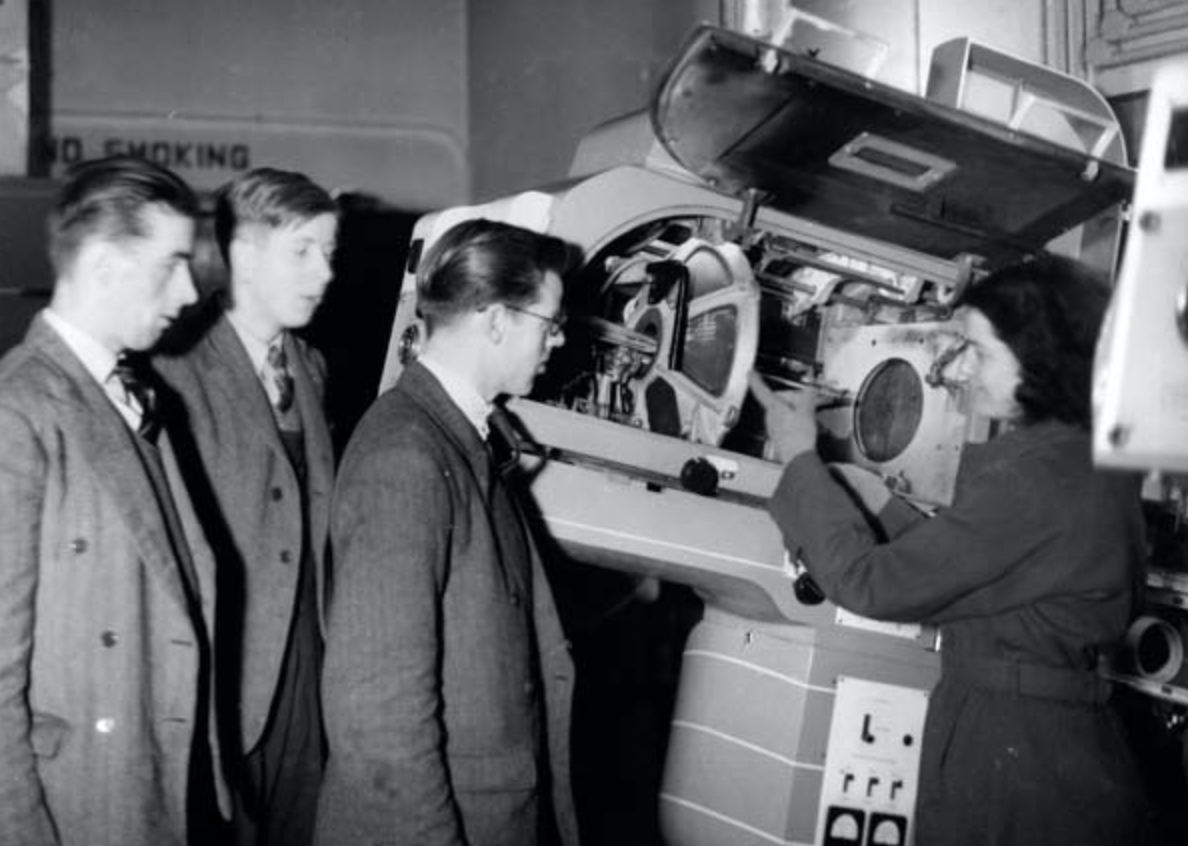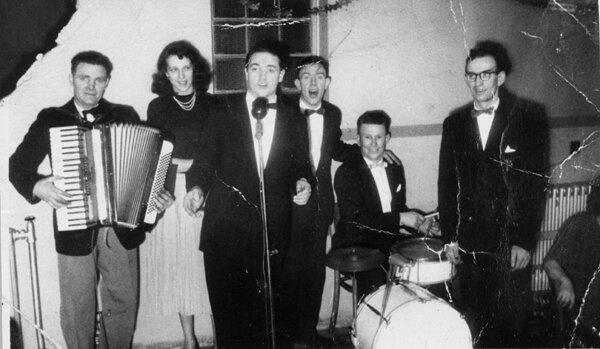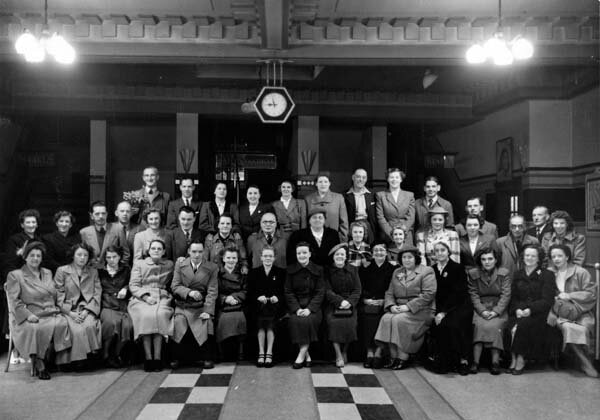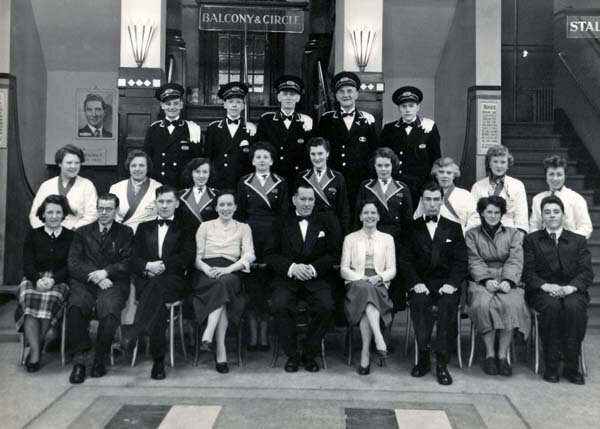Day 81
In the first half of the 20th century, cinema-going was the most popular commercial leisure activity in the UK, and Leith was once home to over 15 cinemas. When the popularity of cinema-going declined drastically in the 1950s, this forced many to close. Today, Leith has only one permanent cinema multiplex, the Vue at Ocean Terminal. In this post, we take a look at a few of Leith’s picture palaces of years past.
The Alhambra
Designed by JM Johnson, this Neo-classic style cinema originally opened as a “Theatre of Varieties,” in 1914 at 200-204 Leith Walk, and it became a full-time cinema by 1915. As it was originally a theatre, it had a deep stage, 20 dressing rooms and a capacity of 1500 seats. The cinema officially closed on 1958 and eventually was demolished in 1974. At one time, the owner of the Alhambra, Alf Beckett, owned a record shop next door but also also owned a smaller theatre on Laurie Street as well called the Picture House or Laurie Street Cinema, which was sometimes referred to as the ‘flea-pit,’ according to a long-time Leith projectionist, W.L. Hume.
The Gaiety Theatre
Perhaps the first theatre to show moving pictures in Leith, this building site in the old Kirkgate went through many transformations before it was demolished in 1963. The original building had been used as a church for over 100 years, but when the United Presbyterian Church found a new premise in 1886, it was quickly turned into a music hall. Shortly thereafter, a fire burned down the original structure, and E.H. Moss built a new theatre he called a Princes Theatre in 1888 in its place. In October 1899, the hall was renamed the Gaiety Theatre and became a multi-purpose venue that showcased theatre shows and variety acts. Harry Houdini was even one of the Gaiety’s famous acts in 1904. Advertisements confirm that cinematographs were first known to have been shown at the Gaiety by 1901, with cine-variety shows showing regularly by 1909. Over time, expansion and upgrades offered improvements to the building, and eventually the theatre was made more conducive to moving pictures as films grew in popularity. By 1930, with a newly installed Western Electric sound-system, it became a full-time cinema. However, the Gaiety turned back into a solely theatrical venue in 1944 and remained so until 1956 when its last show, “Laugh of a Lifetime” ran and the theatre closed forever.
The Capitol
Designed by the same JM Johnson of the Alhambra alongside JA Ross, the Capitol was built in 1928, and at the time, it was largest cinema in Edinburgh with over a 2300 seat-capacity. It also came with a 2 Manual/8 Rank organ built inside. The cinema was particularly unique in design as you entered though a railway arch and trains passed above the theatre. The Capitol was particularly well remembered for its “Capi Club” that featured local talent shows and sing-alongs weekly. Irene Clouston remembers this fondly in her submission to Leith For Ever.
“For sixpence we could go on Saturday to the Capitol Cinema Club for signalongs and films. We even had our own Club song:
’We come along, on a Saturday morning,
Greeting everybody with a smile,
We come along on a Saturday morning,
Knowing it’s well worth while.
As members of the Capitol Club,
We all intend to be,
Good citizens when we grow up,
The champions of the free,
We come along on a Saturday morning,
Greeting everybody with a smile, smile, smile,
Greeting everybody with a smile.’”
With cinema-going attendance declining and the business struggling, the Capital saw potential in the growing popularity of Bingo and turned it into a bingo hall in 1961. It has remained a bingo hall to this day, having recently been sold to 3000 Bingo Club from Mecca Bingo.
The State Cinema
This art-deco cinema was built in 1938, and the complex also boasted shops, a billiard hall, and a skittles alley. According to W.L. Hume, it was considered “de-luxe status and very popular with local patrons.” The main cinema had a seating capacity of 1600.
“Usherettes showed you to your seat in the dark, guiding you using their torches, and at intermittent times sold ice-cream from a tray hanging from their shoulders.
You could smell the cheap perfumed air freshener spray, used by staff squirting it up and down the aisles, to mask the smell of tobacco smoke and other odours, the moist droplets falling on your face.
The stage’s great silver curtains, would reflect the different hues of colours from the stage footlights
Fashionable blue and gold trim 1930s basket woven chairs and tables decorated the posher balcony foyer areas.””
The State Cinema closed as a cinema in 1972 and also found a new life as a Mecca Bingo Hall. By the 90s, it turned into a notorious nightclub called The Babylon, but closed soon after and remained empty for quite some time. In 2018, the Hidden Door Festival, an organisation that opens up urban spaces as a platform for new and emerging artists, used the derelict cinema for a week of arts performances and cinema screenings, and the Edinburgh Short Film Festival held the last film screening in the State Cinema as part of this pop-up festival. Shortly thereafter, what was left of the auditorium was demolished, leaving only the front façade intact, to be repurposed as residential apartments.
Information sourced from the Scottish Cinema Project and Edinphoto.org.uk. Images sourced from Scottish Cinema Project and Edinburgh Collected.










